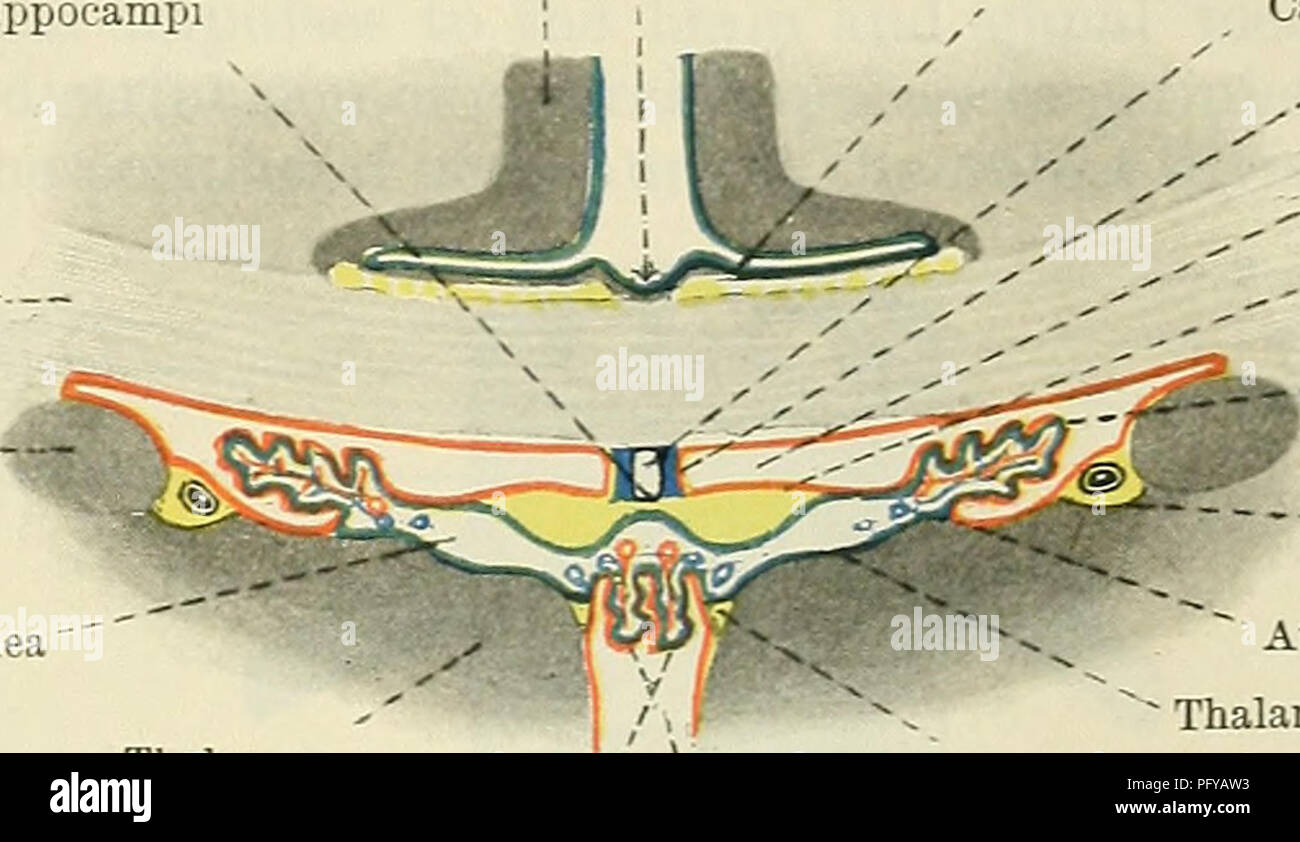. Cunningham's Text-book of anatomy. Anatomy. THE PIA MATER. 675 lateral part is the chorioidal fissure. This is continuous with the intermediate part, and has already been described in connexion with the inferior horn of the lateral ventricle (p. 636). Pia Mater Spinalis.âThe pia mater of the spinal medulla is thicker and denser than that of the brain. This is largely due to the addition of an outside fibrous layer, in which the fibres run chiefly in the longitudinal direction. The pia mater is very firmly adherent to the surface of the spinal medulla, and in front it sends a fold into the an

Image details
Contributor:
Central Historic Books / Alamy Stock PhotoImage ID:
PFYAW3File size:
7.1 MB (263.3 KB Compressed download)Releases:
Model - no | Property - noDo I need a release?Dimensions:
2077 x 1203 px | 35.2 x 20.4 cm | 13.8 x 8 inches | 150dpiMore information:
This image is a public domain image, which means either that copyright has expired in the image or the copyright holder has waived their copyright. Alamy charges you a fee for access to the high resolution copy of the image.
This image could have imperfections as it’s either historical or reportage.
. Cunningham's Text-book of anatomy. Anatomy. THE PIA MATER. 675 lateral part is the chorioidal fissure. This is continuous with the intermediate part, and has already been described in connexion with the inferior horn of the lateral ventricle (p. 636). Pia Mater Spinalis.âThe pia mater of the spinal medulla is thicker and denser than that of the brain. This is largely due to the addition of an outside fibrous layer, in which the fibres run chiefly in the longitudinal direction. The pia mater is very firmly adherent to the surface of the spinal medulla, and in front it sends a fold into the anterior-median fissure of the spinal medulla. The posterior median septum is likewise firmly attached to its deep surface. In front of the anterior-median fissure of the spinal medulla the pia mater is thickened in the form of a longitudinal glistening band, termed the linea splendens, which runs along the whole length of the spinal medulla, and blends with the filum terminale below. The blood-vessels of the spinal medulla he between the two layers of the pia mater. The nerves which leave both the brain and spinal medulla receive closely Commissura hippocampi Gvtus cinguli Indusium Corpus callosum â Nucleus caudatus Tela cliorioidea. Stria longitudinalis medialis Cavum septi pellucidi ' . Septum pellucidum Ventriculus lateralis Crus fornicis Plexus chorioideus lateralis -- - Stria terminalis Attachment of lamina chorioidea - Thalamus (free surface) Thalamus / Taenia thalami Plexus chorioideus vent, tertii Ventriculus tertius Fig. 600.âDiagram of a Frontal Section across the Chorioid Tela of the Third Ventricle. applied sheaths from the pia mater. These blend with the connective-tissue sheaths of the nerves. The ligamentum denticulatum is a strong fibrous band which stretches out like a wing from the pia mater on each side of the spinal medulla, so as to connect the pia mater with the dura mater. The pial or medial attachment of the ligament extends in a continuous line betw